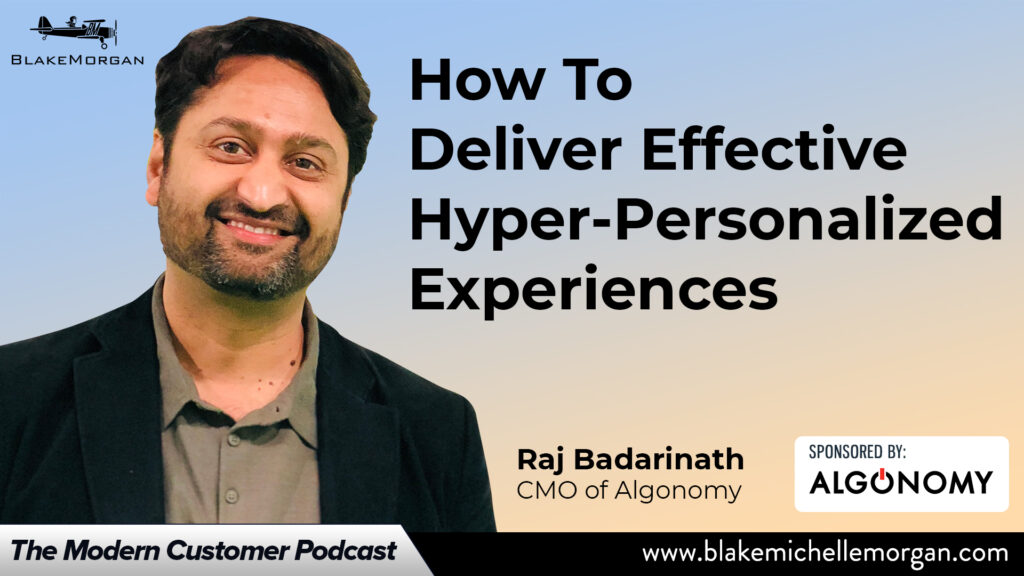It’s no secret that modern customers crave personalization. Efforts to tailor experiences to customers’ needs are foundational to a strong CX strategy. But the next step of personalization is here: hyper-personalization.
According to Raj Badarinath, CMO of Algonomy, hyper-personalization has three main characteristics:
- It focuses on individuals, not segments. Even if two customers have some similar qualities, they each have a unique experience that meets their exact needs.
- It creates experiences in real-time. Hyper-personalization delivers offers right when customers need them most.
- It uses AI and machine learning to improve over time. Hyper-personalization efforts get better as the technology and company learn more about each customer.
Instead of simply providing a certain experience for a customer depending on their demographic or preference segment, hyper-personalization considers the context to choose the right offer and experience in real-time. Hyper-personalization uses technology to look at countless variables and know what a customer is looking for and what they need at that exact moment.
Badarinath gives the example of a customer shopping in a store, likely while also using the store’s mobile app to look up products and get information. The store knows the customer’s preferences and that they are close by and can use hyper-personalization to send an offer that considers the context and meets their exact needs at that moment, perhaps by recommending a product that is relevant to what they are already buying or a discount on a brand they have bought in the past.
At the heart of hyper-personalization is strong digital solutions, especially around AI and machine learning. Badarinath says companies have to consider the digital maturity of their systems when making decisions. Some AI solutions only have the maturity of a three-year-old, while others have the maturity of a 30-year-old. That maturity impacts the decisions the technology makes and how it learns and grows. The same hyper-personalization strategy won’t work on all levels of maturity.
Although AI and technology are important, hyper-personalization is most effective with a human touch. The best companies provide their human employees with tools to access customer data and preferences in real-time to deliver those hyper-personalized offers human-to-human.
In today’s connected world, companies are no longer just competing against other brands within their industry—they are competing against every company. Hyper-personalization sets the standard and drives a strong customer experience and long-term loyalty to fuel business growth.
*Sponsored by Algonomy
_________________
Blake Morgan is the bestselling author of The Customer of the Future. Join the waitlist now for the new Customer Experience Community here.

